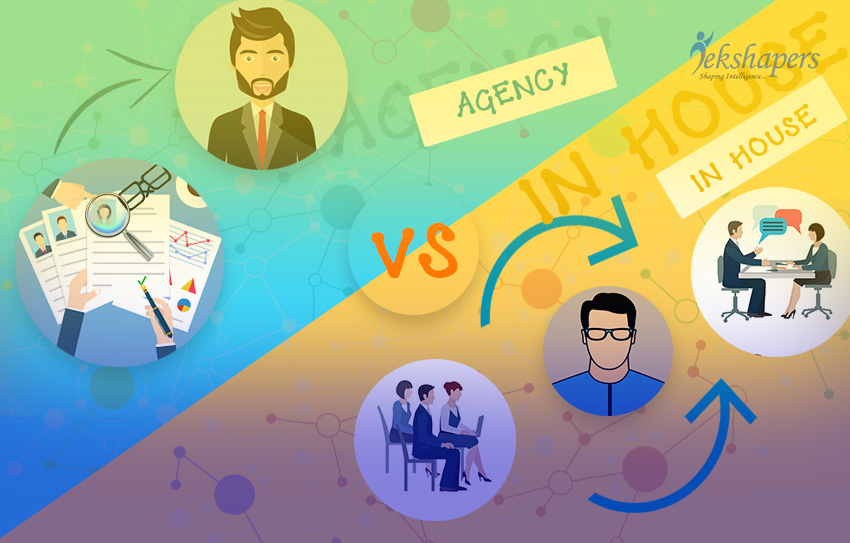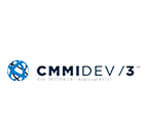What is Change Management Process

Change management is a ubiquitous term that often interchanges with the organizational management system. The change management is the discipline that tells individuals how to prepare, support and equip successfully and can adopt the change in order to drive the organizational success in a flawless manner and get an effective outcome.
As we know, all the changes are unique and all the individuals are unique. Decades of research shows that there are some actions which we can influence people in making their individual transaction. This system provides a structured approach to support the individuals in your organization so that they can move their own current states to their own future states. It is an important function of Human Resource Management, like Staffing or Recruitment Services.

Change Management Process
The main goal of the change management process is to improve the organization by altering how work can be done. Project management activity plays a crucial role in the change management process and they both are intertwined disciplines.
Change management is the process, tool, and technique which are used for managing the people side of change so that they can achieve the required business outcome. To utilize it and make successful personal transitions that result in adoption and realization, it incorporates the organizational tool which can help users. Its main purpose is to implement the strategies for effecting change, controlling change and helping people to adapt to change.
Need for Change Management
The need for change management can be illustrated by given points as below:

While each of these initiatives needs change management to be a success for each individual, but the right amount and approach for change management will be something different. It defines the approach which is needed to manage changes given for the unique situation of your project.
[Also Read: How To Improve Your Recruitment Process]
Benefits of Change Management
The prominent importance of change management is that it offers the conceptual scaffolding for the people, the process and the organization to implement the changes. Some of the benefits of the change management system are given below as:
-
It helps to align the existing resources within the organization and can respond faster to customer’s demands.
-
It allows the overall impact of a change and the organization to assess it, also can be implemented without creating negative effects of running a business
-
It provides a way to anticipate challenges and to respond to these challenges effectively and thus increases ROI (return on investment)
-
It helps to plan effective communication strategies and improves morale, productivity, and quality of work.
-
It also improves collaboration, communication, and cooperation and also increases the acceptance of the change.
Levels of Change Management
Basically, the change management process involves three levels of a system that are entirely different from each other. They are explained in a brief as below:

Levels of Change Management
-
Individual change management
This level requires understanding how people experience change and what they require to change successfully. It also needs to know what will help people to make them successful during their transaction. Today, this is one of the most widely used change models.
-
Organizational change management
This level provides us with the steps and the actions which are taken at the project level to support hundreds of individual users who are impacted by that project. It is complementary to your project management activity which ensures that your projects solutions are designed developed and delivered effectively and are used perfectly.
-
Enterprise Change management
This level is an organizational core competency which delivers the competitive advantage and differentiation and gives the ability to adapt to the ever-changing world. These processes are consistently and effectively applied to the leaders who have the skill to lead their team well.
Steps of Change Management Process
Your business is constantly looking a change, whether it is caused by new technology implementations or the process updates or compliance initiatives, the change is constant in every state and is required for the growth and profitability. Below are 5 steps that ensure your change initiative to be successful as:
-
Identification
Since most of the changes occur to improve the process and outcome, as it is a critical situation to identify the focus and clarify the goals. This involves identifying the resources and the individuals which will facilitate the process and results in the outcome & leads to the endeavor.
-
Presentation
Several layers of stakeholders which include upper management who both i.e. direct and finance the endeavor institutes the change in environment. The process of onboarding the different constituents presented in the business evaluation varies with each framework.
-
Planning
A critical element of planning is to provide a multi-step process rather than sudden unplanned and sweeping changes. This involves activities like outlining the project with clear steps, measurable targets, analysis, measurements, etc.

Steps of Change Management
-
Evaluation
As a part of the planning process, resource identification and funding are the crucial elements. These can include the equipment, software system, infrastructure, etc. There are many models which identify the data gathering and analysis as an underutilized element.
-
Communication
The “golden thread “which runs through the complete practice of change management is the communication process. To identify, plan, onboard, execute good change management plan is all dependent on good communication.
Tools & Techniques in Change Management
To utilize the change management tools effectively, it is very much important to define the changes in your situation and ensure that everyone who is associated with the organization understands and supports the effort. Some of the tools and techniques required in the change management process are:
-
Flowcharting
Creating a flowchart for all organizational process serves as a visual sketch of all problems in the organization. Flowcharting is the simple way to get people on board with where the company is at and where must be it lies on. One useful exercise is to have managers all draw what they need in the current organizational flowchart to look like.
-
Metrics & Data Collection
There are many people squirm at the idea of number crunching, but to collect the right information and data is a critical step in the change management system. It helps to avoid the unnecessary arguments which only lead to frustration and loss of momentum. It must include cycle time, the range of cycle time and a total number of units.
-
Force Field Analysis
This tool provides an initial view of the problems in the change management system which is required to be tackled. It highlights the driver for the change and change inhibitors. The important inhibitor to a change is the resistance from members of the organization. For a new change to be accepted by a member of the organization, you need to focus on the benefit of the new change.
 Tools of Change Management
Tools of Change Management
-
Culture Mapping
If you are responsible for managing the change in the organization, you must be fully aware of the organizational culture so that your management practices are appropriate. Each and every organization has its own way of doing things. This means that every organization has its own way of establishing values.
-
Project Plan
To have a clear project plan is critical for staying on track in today's competitive world. It will serve as a framework from which to work, should know the flexibility of working, and should not cross. It will require utilizing to help you to come up with a clear plan.
Future of Change Management Process
The third era in the development of change management system was that of the 2000s that leads up to the present scenario. Growing out of the need for greater portability and the structure, the change management system has begun adding the formal structure on a number of fronts.
In 2003, Prosci introduced the first integrated approach which leverages organizational and individual change management process and tools in a change management system. Here are 4 hypotheses that led to the new era in the future for change management activities as:
-
Business and project success depends on the adoption and commitment to change by the people in the organization.
-
New workplace paradigms and drivers need to change managers to make a fundamental shift in the way that they work.
-
New workplace maintains the decorum and models to engage the people who require change managers that need the skills to leverage new technologies.
-
A new psychological contract is needed to characterize by diminishing hierarchical power, a culture of permission and individual courage.

Future of Change Management
Globalization and the constant innovation of new technologies result in a constantly evolving business environment. The phenomena such as social media and mobile adaptability have revolutionized business and this effect is an ever-increasing need for more and more changes.
It has been recorded in the reports that 35% of ROI is generated when a change management initiative is implemented, whereas 143% of ROI is generated when change management is implemented. As per the reports of CEO, 82% of business identifies change management process as their first priority among which 25% are able to sustain long-term gains from change initiatives.
[Also Read: How To Protect Your Company From Disruptive Industry]
Conclusion
Due to the ever-changing expectation of the customers, the competition in today’s global economy has itself change and is constantly evolving. The human element of change management can be the most daunting situation to navigate people because they do not like or adjust change. Therefore, involving people early on implementing the process is critical to success which results in better productivity of the businesses.
If you are looking for more such professional staffing solutions or complete assistance in your recruitments to improve your business productivity, then get in touch with our team of experts or drop a mail at sales@tekshapers.com and our staffing solutions team will connect with you at the earliest.
Recent Blog

Why Your Business Needs a Mobile App?
06-Dec-2022Related Blogs

Strategies for Virtual Staffing
07-May-2018
Major Benefits of Virtual Staffing
10-May-2018
A Brief Introduction to Recruitment process
29-Jun-2018
What is Change Management Process
19-Jul-2018
How to Improve Your Recruitment Process
01-Aug-2018









